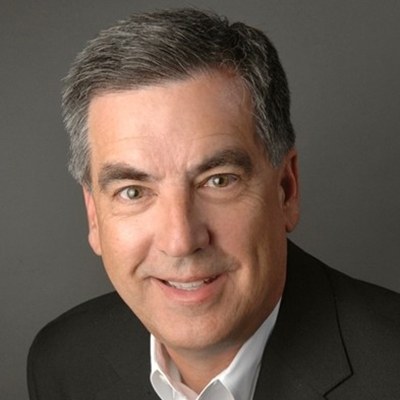“Regrets, I’ve had a few.” That first Frank Sinatra lyric from his song, “My Way,” sticks in my mind when looking at wildfire research today vs. decades ago. Regrets by many that fight fires and those in the scientific research community that the modern-day modeling tools we have now were not available to limit weather disasters and loss of life in the past. Fire-related disasters have and will not go away, but it’s a new day with Reno’s Desert Research Institute (DRI) and its Division of Atmospheric Sciences (DAS) at the forefront of fire research.
As our climate warms, wildfires in the Sierra Nevada are happening at unprecedented sizes and intensities. As evidenced last year, entire communities and resources were threatened throughout Nevada and California. For fire managers trying to understand and predict fire behavior, access to accurate information for decision-making has never been more important. Enter DRI, the Western Regional Climate Center (WRCC), and DAS researchers to get a leg up on wildfire disasters.
DRI’s early involvement with climate and fire research goes back to 1986 with the founding of the WRCC. Housed on DRI’s Reno campus, the WRCC is one of only six regional climate centers in the U.S. that develop and disseminate climate data. WRCC staff conducts various climate and weather-related research. They collaborate with federal and state land management agencies and other stakeholders to develop climate tools.
 Bill Leonard
Bill LeonardToday, the WRCC provides high-quality weather and climate data, both observed and modeled. Land management agencies utilize this data in fire-related tactical, strategic, policy, and planning decisions. It does not stop there.
For decades, the WRCC has served as the fire-related applications research arm for many federal and state agencies spanning all regions of the U.S. The WRCC is also well-regarded in the international fire community. Since 2005, it has supported land management agencies in Australia with their fire-related operational needs.
But just how is DAS taking a BIG leap forward today when addressing fire-related disasters? With a grant from the NV Energy Foundation to support wildfire preparedness in Nevada, DRI and its Atmospheric Sciences Division are developing a Weather and Research Forecast advanced modeling tool that simulates weather, fire, and smoke for firefighting and prescribed fire operations. This model will be available to NV Energy’s fire mitigation team for forecasts and simulations. In addition, the fire and simulation models will be available to other professionals from prescribed fire and air quality communities in Nevada and California through the work of the California and Nevada Smoke and Air Committee (CANSAC).
What is “very cool” about the growing sector of wildfire research? Wildfire disasters are one of our most complex challenges, impacting social and economic systems worldwide. You could spend a lifetime on one element but understanding the physical components and human dimensions is vital. From fire physics to the impact on communities, DRI efforts are going a long way to effect sound policy changes and decision-making by fire managers.
Stories are already emerging that validate DRI and DAS efforts. One project currently underway is making recommendations to the National Weather Service for its Red Flag Warning System. DRI and DAS are behind the scenes creating a standardized criteria methodology for Red Flag Warnings and making outreach recommendations. Wind and humidity are the primary drivers. DRI is proposing a high-resolution grid for localized issues.
DRI is also working on an evaporative drought demand index for fire/weather meteorologists. It’s being incorporated into a training course on how evaporative demand can impact the severity of fires.
Many often ask why wildfires in Western North America are becoming increasingly worse. A number of experts point toward climate change as the sole reason. But is it too “easy” of an answer? Can other factors be at play as well? Can the history of fighting forest fires play a role and lead to more extreme wildfires?
The U.S. and Canada effectively suppress all but 2%-3% of wildfire starts. However, this small percentage of fires burn at the height of each fire season when dry conditions and extreme fire weather thwart even the most aggressive attempts to suppress them.
Keala Hagmann, Ph.D., University of Washington, asks whether a century of fire exclusion and past forest management practices have jeopardized forest biodiversity, the quantity and quality of water, stability of carbon stores, recreation, and air quality?
There is no easy or one correct answer. As a result of DAS research in the above areas, incremental improvements are already evident in dealing with wildfire disasters. The big challenge is whether we have the political and societal will to look beyond climate change alone.
With their focus on mitigation, adaptation, data sharing, and modeling tools, Desert Research Institute (DRI) and its Division of Atmospheric Sciences (DAS) will continue to lead the way to more resilient communities and ecosystems.
When it comes to wildfires, “Regrets, I’ve had a few” will lessen in the years to come due to DRI and DAS research work in this area.
NCET Tech Wednesday, Aug. 10, is your opportunity to learn more about DRI and DAS wildfire research and development, spanning simulation modeling tools, air quality sensors, and purifiers to evaluate wildfire smoke, along with drone deployments to active burn areas.
Sign up early for the DAS onsite presentation tour from 4 p.m. to 5 p.m. and networking from 3 p.m. to 4 p.m. More information at NCET.org.
Bill Leonard is VP of Communications at NCET and a freelance copywriter of lead-generating customer case studies, brand and success stories, conversion-driven web copy, and white papers. Connect with Bill at linkedin.com/in/billleonardusa. NCET produces education and networking events to help people explore business and technology.